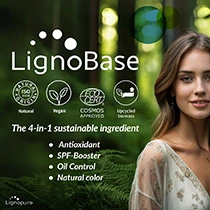Givaudan scent receptor research unlocks unexplored molecules for fragrance
Key takeaways
- Givaudan scientists enhanced scent receptor sensitivity 100 times, unlocking 20 previously unresponsive human odor receptors.
- The decade-long study establishes a direct link between specific receptors and natural scents, advancing understanding of how the human brain perceives odors.
- This discovery enables Givaudan to design fragrances with greater accuracy and gain a competitive creative advantage in the perfume industry.

Givaudan has unveiled a discovery in scent receptor research by decoding how consumers’ noses recognize and detect some of nature’s scents. Company scientists developed a methodology that enhances scent receptor sensitivity by a 100-fold through modifications to the receptor’s tail ends.
Givaudan states that the decade-long study has yielded a scientific breakthrough, paving the way for “unprecedented precision” in fragrance creation. Personal Care Insights speaks with representatives from the Science and Technology department at Givaudan.
“This research represents a major advance in understanding how human olfactory receptors detect key natural scent molecules. By engineering receptor domains to increase their functional expression and sensitivity in laboratory systems, Givaudan scientists can now study receptor‑odorant interactions in far greater detail,” Andreas Natsch, head of in-vitro molecular screening for Fragrance and Beauty, tells us.
Natsch explains that this enables a more precise understanding of how individual molecules contribute to a specific olfactory impression — for example, the woody‑amber character of ambrox or the peppery facet of rotundone.
“In creative practice, such knowledge helps perfumers and the chemists who design and synthesize new fragrance molecules to work together more purposefully: selecting or crafting ingredients that truly drive desired perceptions rather than relying solely on empirical experimentation,” he adds.
Givaudan says the research marks a turning point where smell science becomes a direct creative advantage, allowing the company to lead the way in impactful, distinctive, and targeted fragrances that stand out in the market.
 Givaudan states that it is now possible to pinpoint specific odor molecules to particular receptors.Nature’s signature scent
Givaudan states that it is now possible to pinpoint specific odor molecules to particular receptors.Nature’s signature scent
Marion Coureault, marketing manager for Fragrance and Beauty, tells us that the study identified specific human olfactory receptors responsible for recognizing several “signature” odorants found in nature — such as grapefruit (nootkatone and menthane‑thiol), patchouli (patchoulol), rose (citronellol/geraniol), and malodour notes like cork taint (2,4,6‑trichloroanisole).
“Being able to link each of these molecules to its corresponding receptor provides a molecular map connecting chemistry and perception,” says Coureault.
She explains that this insight offers a foundation for refining existing ingredients and discovering new ones.
“For instance, chemists can design new molecules by considering features that activate particular receptors or avoid those linked with unwanted sensory impressions. In this way, ingredient innovation becomes more targeted and evidence‑based, supporting both authenticity in recreating nature and originality in creating entirely new olfactory spaces,” says Courneault.
Fragrance innovations
Human smell senses rely on 400 olfactory receptors, explains the company, “each working like a lock waiting for its scent molecule key.”
Givaudan states that for 30 years, researchers struggled to study many of the receptors in a laboratory due to their low sensitivity, leaving silent receptors without known matches.
 Human smell senses rely on 400 olfactory receptors, each working like a lock waiting for its scent molecule key.The company’s latest innovation has successfully activated previously unresponsive receptors, unlocked 20 specific human odor receptors, and detected natural scent molecules. It says that it is now possible to pinpoint specific odor molecules to particular receptors.
Human smell senses rely on 400 olfactory receptors, each working like a lock waiting for its scent molecule key.The company’s latest innovation has successfully activated previously unresponsive receptors, unlocked 20 specific human odor receptors, and detected natural scent molecules. It says that it is now possible to pinpoint specific odor molecules to particular receptors.
“For the fragrance industry, this signals a move towards scientifically guided design — where molecular insight and creativity work hand‑in‑hand to produce distinctive, emotionally resonant compositions,” says Natsch.
At VivaTech this year in Paris, France, Givaudan showcased fragrance technologies underscored by digital evolutions. One concept was story-smelling, which refers to the sensory experience of fragrances and what is being said about them.
The company stated that digitalizing the storytelling aspect in the fragrance category is crucial for the industry’s future, and the future of fragrance will be intertwined with the digital world.
In May this year, Givaudan launched ChériScentz, a tool for creating sensual fragrances. The tool responds to the growing demand for perfumes that reflect emotional connections, authenticity, and inclusivity by discovering how scents evoke feelings of attractiveness and intimacy.
Coureault says the new study is the result of decades of internal research into human olfactory receptors, culminating in a reliable method to express and study them in vitro.
“The findings, published in Current Biology, provide a modern framework for understanding smell through both sensitivity and specificity at the receptor level.”












